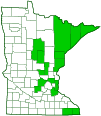Suede Bolete
(Xerocomus subtomentosus)
Conservation • Description • Habitat • Ecology • Distribution • Taxonomy
Conservation Status |
|
|||||||
| IUCN Red List | not listed |
|||||||
| NatureServe | NNR - Unranked |
|||||||
| Minnesota | not listed |
|||||||
Description |
||
Suede Bolete is a nondescript, brown, medium-sized mushroom. It occurs in Europe, Asia, eastern Australia, and North America. In the United States it occurs east of the Great Plains and west of the Rocky Mountains. It is uncommon in Minnesota where it reaches the western extent of its eastern range. It is found in summer and fall alone, scattered, or in groups but not clustered (gregarious). It grows on the ground under or near hardwood and conifer trees. It is ectomycorrhizal, obtaining its nutrients from the rootlets of trees and providing neutral or positive feedback. When it first appears, the cap is convex and brownish-yellow, brown, yellowish-brown, or olive brown. The upper surface is dry and is densely covered with short velvety hairs. The margins are turned inward. As it ages the cap expands and the margins are turned downward. Mature caps are broadly convex to almost flat, sometimes depressed in the middle, and 1½″ to 4″ (4 to 10 cm) in diameter, sometimes much larger. The margins are sometimes turned upward. The upper surface sometimes develops cracks creating block-like patches similar to dried mud (areolate). The pore surface is bright yellow at first, becoming brownish-yellow or olive yellow at maturity. When bruised it may weakly turn blue or not change color at all. The pores are large and angular, with 1 to 3 pores per 1⁄32″ (1 mm). The pore tubes are ⅜″ to ¾″ (10 to 20 mm) deep. The stalk is solid, tough, 1½″ to 3″ (4.0 to 7.5 cm) long, and ⅜″ to ¾″ (1 to 2 cm) thick. It may be tapered to the top, tapered to the bottom, or equal in width from top to bottom. There is no ring. Sources differ on the texture of the upper part of the stem. One writes that there is often a network of fine ridges (reticulate) due to the pore surfaces being pulled down the stalk (Mushrooms Demystified). Another writes that it is “often longitudinally ridged or somewhat reticulate” (California Fungi). A third writes that it is ribbed near the top but not reticulate (MushroomExpert.com). The flesh is white to pale yellow. It usually turns pale blue when sliced. It is edible but the taste is mild and it is not much sought after. The spore print is olive-brown. |
||
Similar Species |
||
Habitat and Hosts |
||
|
||
Ecology |
||
Season |
||
Summer and fall |
||
Distribution |
||||
|
Sources |
|||
| 8/28/2023 | ||||
Occurrence |
||||
|
||||
Taxonomy |
|||
| Kingdom | Fungi (Fungi) | ||
| Subkingdom | Dikarya | ||
| Phylum | Basidiomycota (Basidiomycete Fungi) | ||
| Subphylum | Agaricomycotina (Higher Basidiomycetes) | ||
| Class | Agaricomycetes (Mushrooms, Bracket Fungi, Puffballs, and Allies) | ||
| Subclass | Agaricomycetidae | ||
| Order | Boletales (boletes and allies) | ||
| Suborder | Boletineae | ||
Family |
Boletaceae (boletes) | ||
| Subfamily | Xerocomoideae | ||
Genus |
Xerocomus | ||
Genus Species |
|||
Synonyms |
|||
Boletus lanatus Boletus leguei Boletus striipes Boletus subtomentosus Boletus xanthus Ceriomyces subtomentosus Leccinum subtomentosum Rostkovites subtomentosus Versipellis subtomentosus Xerocomopsis subtomentosus Xerocomus lanatus Xerocomus leguei Xerocomus xanthus |
|||
Common Names |
|||
Suede Bolete Yellow Cracked Bolete |
|||
Glossary
Areolate
In mushrooms, the cap surface cracked creating block-like patches similar to dried mud. In lichens: the surface sharply divided into islands separated by cracks.
Ectomycorrhizal
A symbiotic, neutral, or beneficial relationship between a fungus and the tiny rootlets of a plant, usually a tree, where the hyphae surround but do not penetrate the rootlets.
Visitor Photos |
|||||
Share your photo of this fungus. |
|||||
| This button not working for you? Simply email us at info@MinnesotaSeasons.com. Attach one or more photos and, if you like, a caption. |
|||||
Paul |
|||||
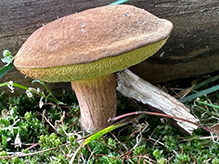 |
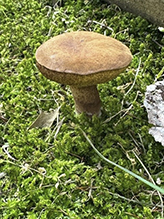 |
||||
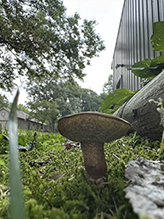 |
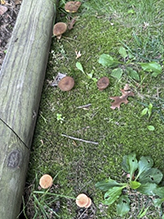 |
||||
Honey Fae (Farah) |
|||||
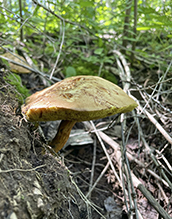 |
|||||
MinnesotaSeasons.com Photos |
|||||
|
|||||

Slideshows |
||

Visitor Videos |
|||
Share your video of this fungus. |
|||
| This button not working for you? Simply email us at info@MinnesotaSeasons.com. Attach a video, a YouTube link, or a cloud storage link. |
|||
Other Videos |
|||
| Suede bolete mushrooms, Xerocomus subtomentosus, Boletus subtomentosus Lady Mushroom |
|||
About
Sep 16, 2021 Suede bolete mushrooms, Xerocomus subtomentosus, Boletus subtomentosus Xerocomus subtomentosus, commonly known as suede bolete, brown and yellow bolet, boring brown bolete or yellow-cracked bolete, is a species of bolete fungus in the family Boletaceae. An infrequent species, the Suede Bolete is found mainly under broad-leaf trees, but it does occur also on the edges of conifer plantations where birch and willow grow. |
|||
| Boletus subtomentosus - Xerocomus subtomentosus - Suede Bolete The wonderful world of mycology |
|||
About
Nov 13, 2022 In a small lake near our house that always gives us a lot of joy, I was able to see a few specimens of this bolete that I share with you here, its plush hat is very striking, it is edible of low quality and very common in our deciduous forests. That morning you can also see some beautiful cormorants that I also share. I hope you like it Xerocomus subtomentosus (L.) Quél. 1888 Characteristic: -Cap: medium from 3 to 10 cm, its shape changes from hemispherical to flatten out with maturity. The tomentose or velvety surface is yellowish-olive green to brownish-olive green, excess margin - The tubes are up to 1.5 cm long, the color varies from yellow in young specimens to yellowish green in adults. - The pores are angular especially near the foot, adnate and a little decurrent from yellow to yellowish olive green, under pressure they change slightly to blue - Stem: Cylindrical, sometimes curved, narrows towards the base, has folds or lateral ribs, yellow to ocher yellow, reddish ocher dots can also be seen. -Flesh. A little spongy on the cap and hard on the stem, white on the cap and slightly yellowish ocher on the stem. The cut can blue the cut a little on occasion. Slightly fruity smell and pleasant taste -Edible: Edible not highly appreciated -Habitat: Mainly in deciduous forests, in this case in oak -Place: Bizkaia, Basque Country -Season: Summer and Autumn |
|||

Created: 2/2/2023
Last Updated:
